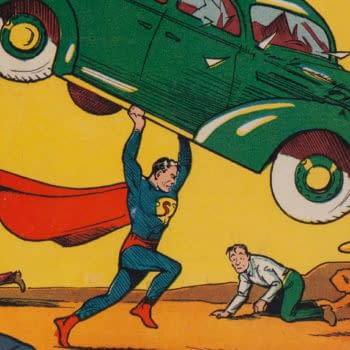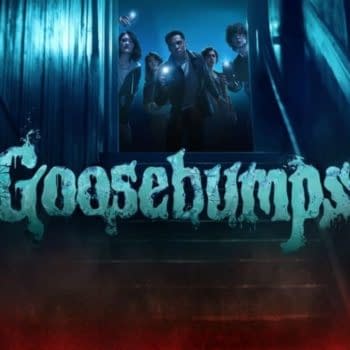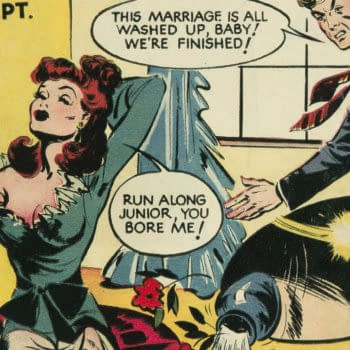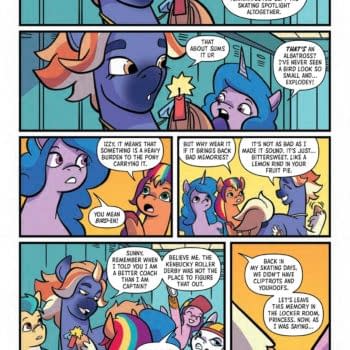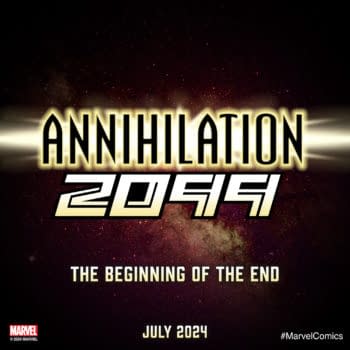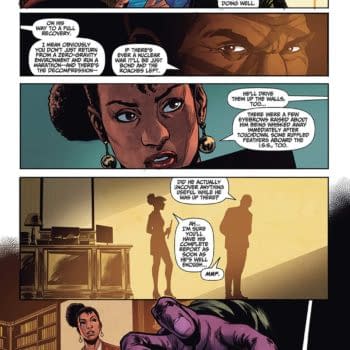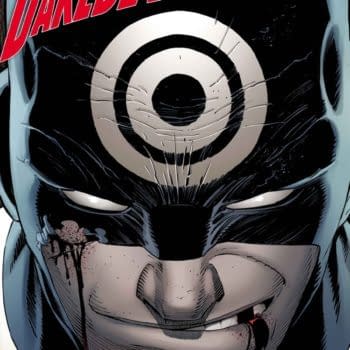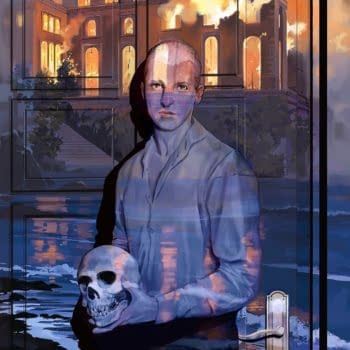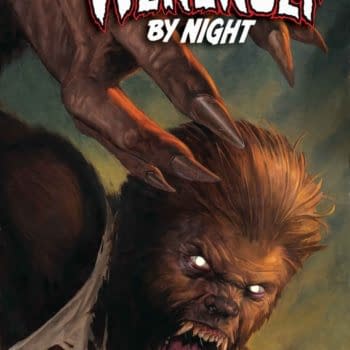Posted in: Comics | Tagged: Comics, phil seuling, retailers, rock bottom comics, seagate
Columbia, Missouri's Rock Bottom Comics Stays On Top With 40 Years Of Comics Retail

Anthony passed away a few months after the interview, and Empire Comics closed shortly thereafter, but he posed a pretty good question. I told him Mile High and Lone Star would be two of the prominent names to come to mind, and when Lone Star recently announced that they were completely exiting the brick and mortar storefront business to focus on their highly successful mycomicshop.com operation, I started wondering about the question again. Lone Star founder Buddy Saunders — a fixture of the developing 1960s comic fanzine and convention scene — started selling comics mail order in 1961 and opened his first store in 1977. Mile High's Chuck Rozanski opened his first store in 1974 after a few years of mail order and conventions.
There are only a small handful of comic book retailers still in business who have been around for 40 years, or more. Case in point this year is Rock Bottom Comics of Columbia, Missouri, who just celebrated their 40th Anniversary earlier this month (and rather amazingly, is the 2nd longest-existing comic retailing storefront in Missouri. The oldest is Clint's Comics in Kansas City, Missouri).
40 Years of comic book retail is no easy feat. The business as we now know it developed over that time, and there have been lots of peaks and valleys in the industry during the past four decades. That's why I had to ask Rock Bottom Founder Glenn Brewer — now in his 7th retail location and still going strong in Columbia — how he did it, how he got started, and what it was like in the early days:
(with special thanks to Rock Bottom's Drew Stuart for facilitating this interview)
Bleeding Cool: Let's start off by talking about how you got into comics. There were very few brick and mortar comic shops around at that time, particularly in this area of the country. Let's hear a little about the atmosphere of buying and selling comics before there were many stores around.

Glenn Brewer: The shop in Arkansas started about 1 year before I moved to CoMo. My sister and I started a used paperback book store (mostly sold scifi) and one day someone brought in some comics and a price guide. And we started selling back issues in AR, we started seeking out comics. Before I left for MO, I started trying to get new comics from a local distributor. Around the time we started selling back issues I first encountered the Overstreet Price Guide, I think it was on volume 2 at the time, but we didn't really use it. That was a couple of months after I left AR, before Rock Bottom Comics in CoMo opened. With a brief detour through the 1973 SDCC, where I bought some DC stuff from Russ Cochran. Rock Bottom Comics opened in CoMo and immediately became involved with Seagate at that time.
I experimented on a small scale and as it was successful, I expanded. Really, I'm just a peddler and go with demand.
Rock Bottom was opening just as what we now call direct market distribution was in its infancy. You mentioned that Rock Bottom got comics from Phil Seuling's Seagate in those early days. I'd love to hear a little bit about comics distribution in the 1970s from a retailer's perspective.
Getting comics from Seagate was so much better than trying to work with a local vendor, because you couldn't get what you need or what the customers wanted. It was an incredible adventure, because you have no idea or history of what you can sell. Ordering 50 copies of Conan or a pile of X-Men, it was crazy. I never made any money because you always had to buy so much. We did build a great back stock through that.
[Drew Stuart helps me with a follow-up question here on the pre-Seagate era: As Glenn tells it, trying to get comics back then was terrible. The distributors tended to be inconsistent and often disorganized. Glenn remembers one of the better distributors where he would walk into their warehouse and there would just be piles of books sitting on tables filling the room. Sometimes, with a bit of digging you could find things you were looking for, but it was a very manual process. Books would be stacked by title, with the most current issues toward the top, older books to the bottom. Making weekly trips, he could acquire what was new in stock and restock previous issues the store was turning.]
I'm also particularly curious about your perspective on what we think of as the hot new/recent books of that era. There was a bit of a renaissance in comics which began the Bronze Age — Barry Smith and Roy Thomas on Conan, Denny O'Neil and Neal Adams on Green Lantern/Green Arrow, both running in the early 70s. Starlin's Warlock also comes to mind in this period. Of course, there was the All-New All-Different X-Men in the mid-70s. And as you have noted, The Night Gwen Stacy Died was just a few months before Rock Bottom opened. What stands out as the hot sellers in the store in those first few years?
Barry Smith was brilliant, we knew that. It wasn't a surprise when Conan sales dropped after BWS left. It was Barry Smith at his best. The guys that took over for him were great, but they weren't BWS. Neal Adams was incredibly brilliant on GL/GA. It was so daring. Warlock was popular and lots of people loved it, but my customers didn't like it, so neither did I. X-Men, the ABC [Austin, Byrne, Claremont] run is what we called it; the art was brilliant, Austin made Byrne look like a genius. Gwen Stacy… we knew that was a big deal. It took us a few months for us to get that traded in; I might have even had a few that I brought from AR.
Sough after books in the early years were: BWS Conan, 1st App of Mary Jane Watson (ASM 42), Brand new and early X-Men have always been strong where I've been selling comics.
I have an impression from talking to you on twitter that Rock Bottom buys & sells vintage comics (I'm a vintage collector myself), and of course, through the 70s and 80s, back issues were a major component of the business of most shops. I'm always curious to hear retailer tales about collections bought and sold. I'd bet Rock Bottom has had some cool books pass through its doors since 1973. Any interesting tales of key books or collections bought and sold?
1st collection I bought was a complete (through current) run of BWS Conan and early X-Men. I've owned about 5 Amazing Spider-Man 1's, 6 Amazing Fantasy 15's and about 5 X-Men 1's. And only one of those X-Men 1's was amazing. I mean it was stunning and I sold it for full guide at the time: $600. I invested quite a bit in Disney over the years as they went up year after year. And then they quit. One day I had this valuable old golden age book come in, I don't remember what it was now. At the time it booked for about $1500, I had the book for less than a day. I sold it for $800, but I doubled my money on it. Like I said, I'm a peddler.
We did gain access to a great consignment collection in the past few years that originally came mostly from me. He bought some other places, but it mostly came from Rock Bottom.
Rock Bottom has seen all of the direct market's boom and bust cycles: The mid-1980s b&w indy comics boom, the early 90s boom with Image, Valiant, (and strong DC and Marvel), and the seemingly-inevitable declines after those major peaks. And of course, a long lull in the 2000s that the industry is climbing out of right now. Many retailers left the business in the wake of some of the major declines, which is why it's so incredibly rare to have brick and mortar stores that have been open 40 years. How has Rock Bottom successfully navigated a market that is often so difficult?
The b&w boom became the b&w glut. And we lost a lot of stores over it. Cerebus and TMNT were both brilliant for the time. Cerebus was stunningly brilliant. Jeff Smith, with Bone and Terry Moore are more current works in the format, but they're still great.
The early 90's were for the speculators. And when they decided they couldn't unload full cases of Valiants and X-Factors and whatever, it dropped. And when it went it destroyed the comic book and baseball card market. The way I got around that is not because we weren't hurt, we were just too stubborn to quit. I wasn't making any money and I still don't make a significant amount of money,but I'm really happy that I don't have to work for someone else. I've also not been shy about supplementing the comics with games. We've got a lot of other great retailers in the game market here and we have a really good relationship with them.
Which brings us to the future: We've seen a couple of comic retail storefront operations that had been open since the 70s close in recent times (perhaps most notably, the Lone Star chain selling its last 2 brick and mortar locations recently). Change is in the air with the advent of digital, but there's plenty of optimism at all levels of the business as well. What's the future of comics retail from the perspective of a store that has been open for 40 years?
I don't do the future so well or I wouldn't have sold a 9.6 X-Men 1 for $600! I think we're ok for a few years. Digital may eventually overtake paper, but I don't think it's in my or your lifetime. It may cut it back, you know? Really, the only management skill I have is to identify somebody with talent and then hire them, pay them and get the hell out of their way.
Our plan for the future is this: we're just going to do what we've always done, change. We'll adjust, expand this, and trim that. Back issues are a great example of that. Over the long haul back issues have never been a hugely profitable item, but they've always been what the people have been in looking for. Back issues are part of what makes it such a neat place.




